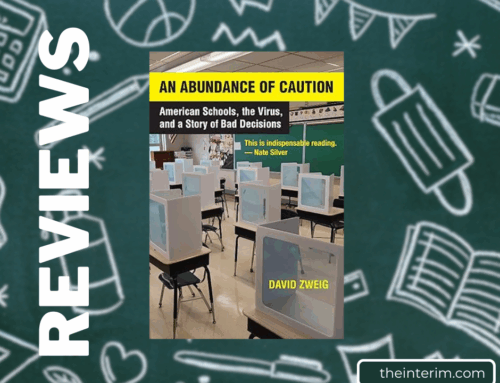 In Hollywood, the maxim “Imitation is the sincerest form of flattery” isn’t just a saying, it’s a business strategy and a creative philosophy, which is why it was only a matter of time before prime time television went back to the Sixties.
In Hollywood, the maxim “Imitation is the sincerest form of flattery” isn’t just a saying, it’s a business strategy and a creative philosophy, which is why it was only a matter of time before prime time television went back to the Sixties.
With a total of 15 Emmy awards, AMC’s Mad Men has taken the place of The Sopranos as the quality cable show that primetime networks most wanted to emulate, and while it took them a few years, they finally got their act together this fall, debuting Pan Am on ABC and The Playboy Club on NBC. Pan Am is set in 1963, The Playboy Club in the same stylish, prelapsarian era, and both series get their titles from icons of the period – a prestigious, pioneering U.S. airline and an exclusive nightclub founded by probably the world’s most famous pornographer.
The setting isn’t the only thing that these shows copied from Mad Men, though; in a recent Wall Street Journal article, an unnamed TV executive mentioned in passing that they’d received around 20 pitches focusing on strong women and female empowerment, in the wake of a much-discussed Atlantic Monthly article from 2010 with the provocative title “The End Of Men.” Some reinvigorated vision of feminism was obviously in the zeitgeist, but how, you might reasonably wonder, did this get injected into a pair of primetime dramas focused on stewardesses and Playboy bunnies?
Here’s where Mad Men’s basic premise provided a template, but using the presumed sexism and male hegemony of the setting (America in the barely-diminishing wake of the postwar boom) as the context for a story of women overcoming a system rigged against them. With Mad Men, this conflict is embodied in an ambitious female ad copywriter, the capable office manager of her firm, and the uptight and depressed wife (later ex-wife) of their agency’s star executive. It’s a set-up that’s paid immense dramatic dividends for the show, and seen it taken seriously by critics and fans as a sort of filmed sociology essay.
This fall’s duo of period dramas set up their protofeminist context with, well, a whole lot of talking, really. In The Playboy Club Hugh Hefner – the aforementioned pornographer – was pressed into service, providing a voiceover for the pilot episode proclaiming that they were changing the world, “one bunny at a time.”
“Nobody ever knew their last names,” Hef intones with retrospective pride, but they “were some of the only women in the world who could be anyone they wanted to be.” Which sounds like a tall order if you have to do it while wearing heels and a fluffy tail as you serve whiskey sours to leering Sears executives.
In Pan Am, it’s left to one of the alpha males – an airline pilot – to explain how the lovely young stewardesses in their tailored blue suits were harbingers of a revolution. “They’re not like normal women,” he tells another pilot. “They’re mutations … They don’t know that they’re a new breed of woman. They just had an impulse to take flight.”
Having gotten that out of the way, the shows hurled themselves into the messy business of long-form melodrama, with plotlines involving a murdered mobster, a runaway bride, an ambitious lawyer, a budding romantic triangle, a gay bunny, and a stewardess working as a CIA courier. And lots of shots of men in sleek suits and slicked-down hair and women in cocktail dresses and print dresses, driving in vintage cars down streets free of graffiti and litter; the show’s writers might have been labouring to breathe life into some creaky plotlines, but the art department looked like they were having a ball.
Pan Am might have had to run the gauntlet of lukewarm reviews as it hit the air, but The Playboy Club ran into a storm of criticism across the political spectrum, from feminist icon Gloria Steinem (who once took a job as a bunny to write an expose of the club – a story borrowed for the show’s third episode) to the conservative Parents Television Council, who called it a “blatant attempt to obliterate any remaining standards of broadcast decency,” based on the title alone. They all got their way, ultimately, as the show was cancelled after three episodes, with NBC blaming poor ratings. As I write this, Pan Am is also underperforming, and might not remain on the air by the time you read this.
(An aside on ratings: The debut episode of The Playboy Club attracted 5.02 million households, while the final aired episode drew 3.7 million. No episode of Mad Men has ever drawn more than 2.9 million viewers. As a business, television remains a mystery to me.)
Conservatives are often accused of wanting to turn back the clock, so it’s curious that the tacitly liberal entertainment industry has become so attracted to the burnished half-life of the Eisenhower era, to the point where their love of all that abundant style makes their message of female empowerment seem tacked on. You’ll have to forgive me if I’m forced to look for a deeper meaning.
As a father of daughters, I’m personally invested in a world where their options are abundant, their rights respected, and their character and abilities are rewarded. As a child of the ‘70s, however, I’ve seen the law, government, schools and the media encourage and even enshrine enmity between the sexes, and been a witness to feminism’s dogmatic cheerleading for abortion, right past the point where the law of unintended consequences has seen girl babies become the global victim of the “right to choose.”
Evolving through its first, second and third waves, feminism has confused and even contradicted its own objectives, to the point where some of its own proponents have come to doubt its efficacy. It shouldn’t be a surprise then that, with the benefit of hindsight, there might be some inchoate desire to go back and revise the past, and imagine, if only for an hour or so, a reset button.




